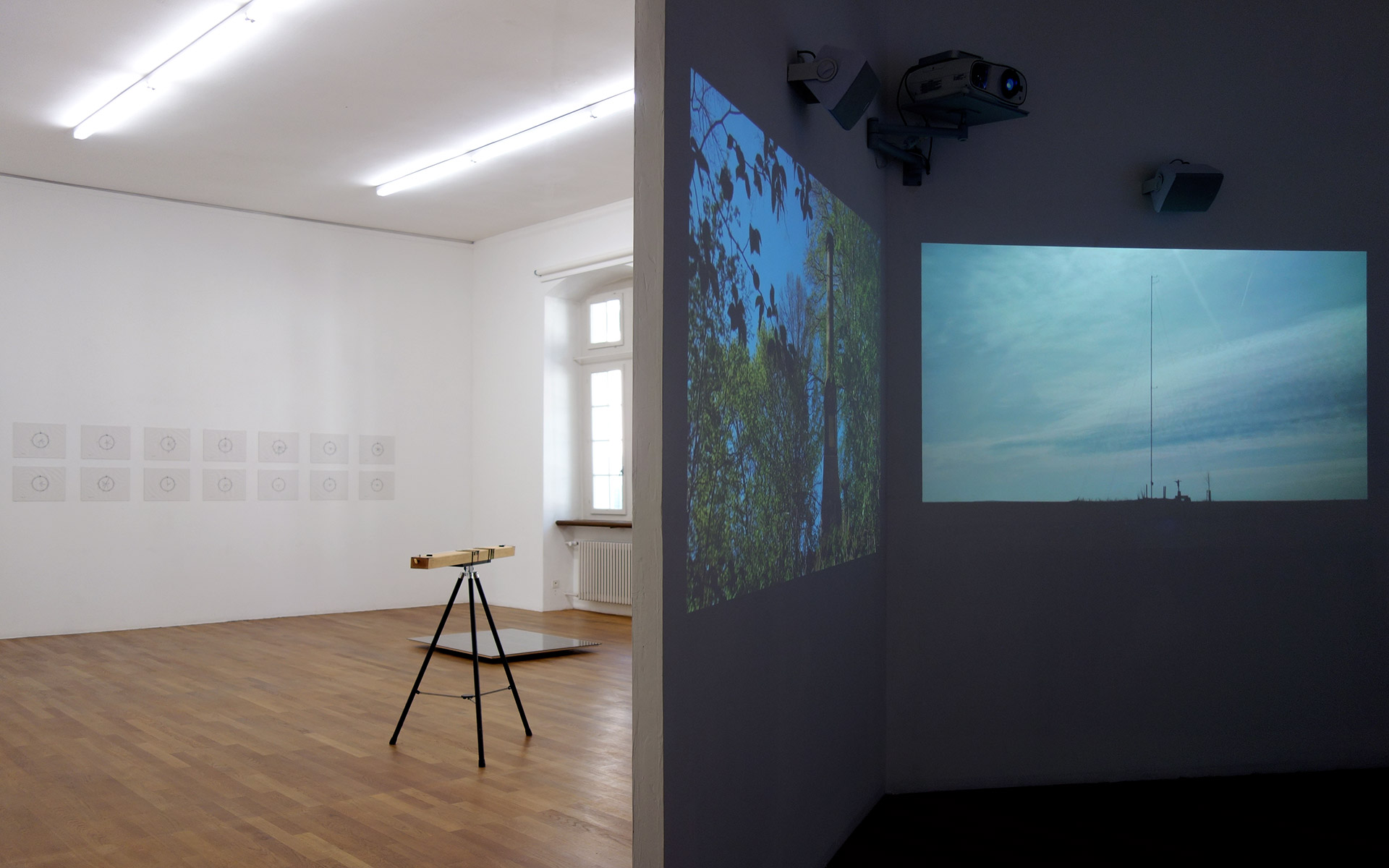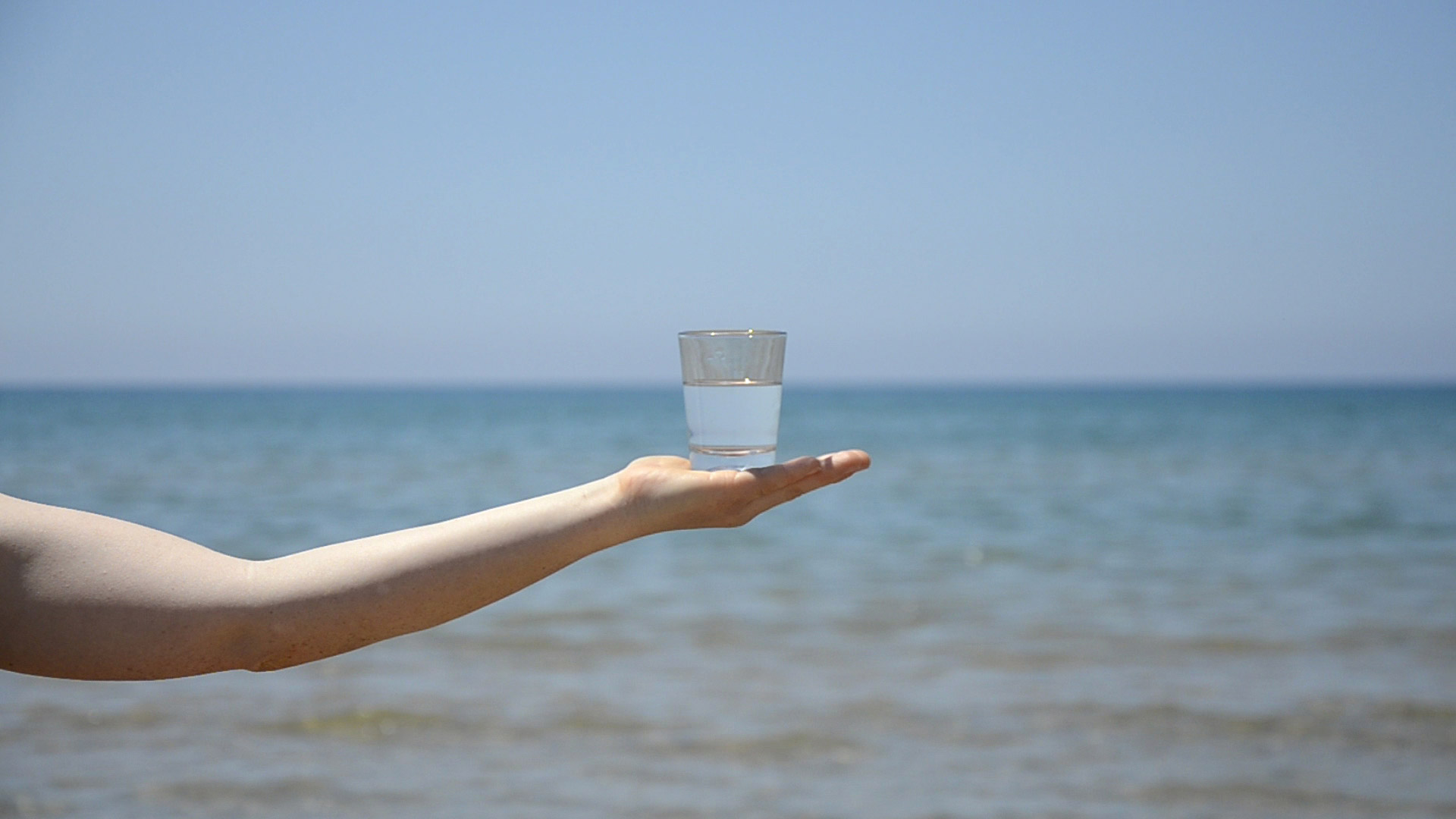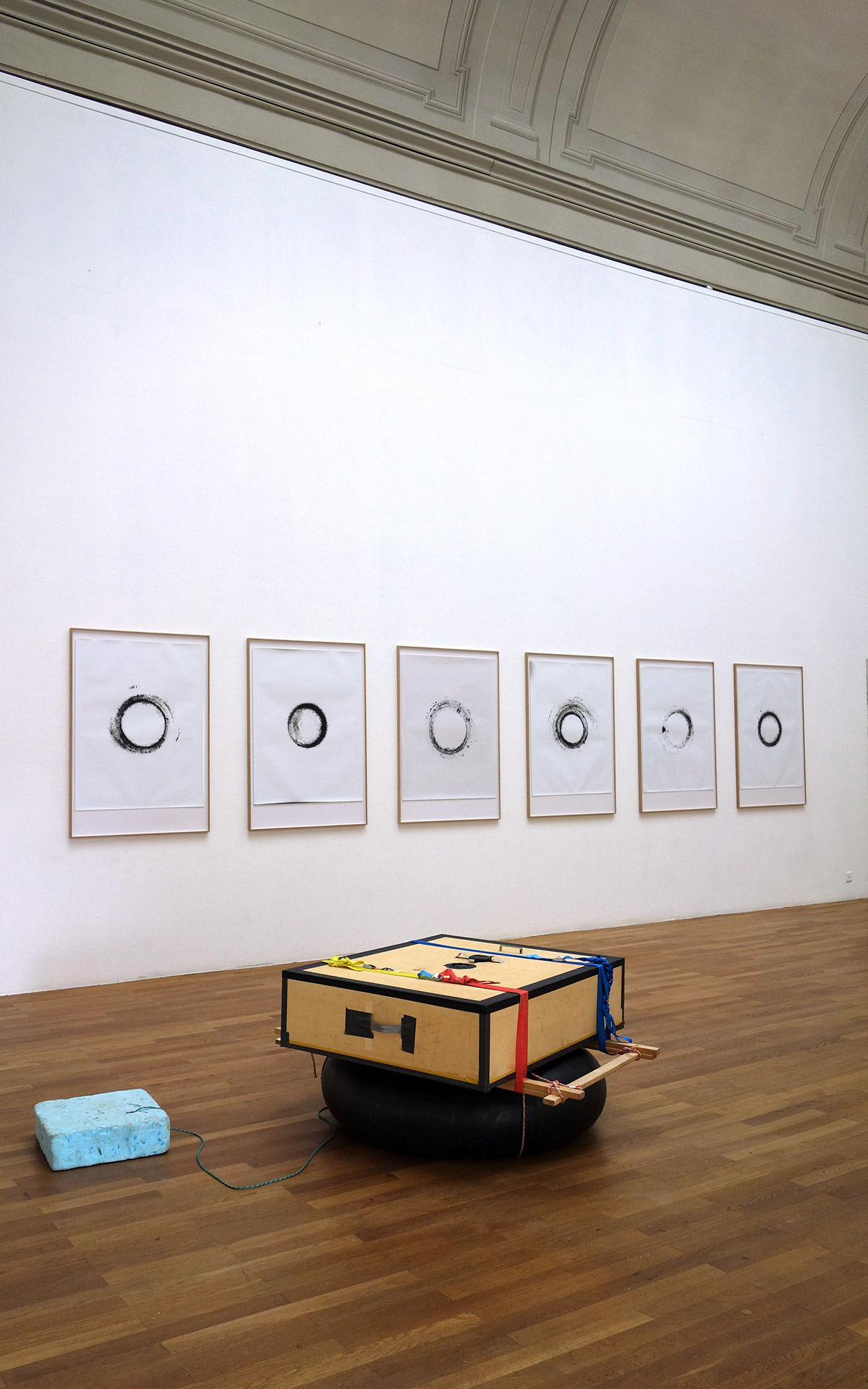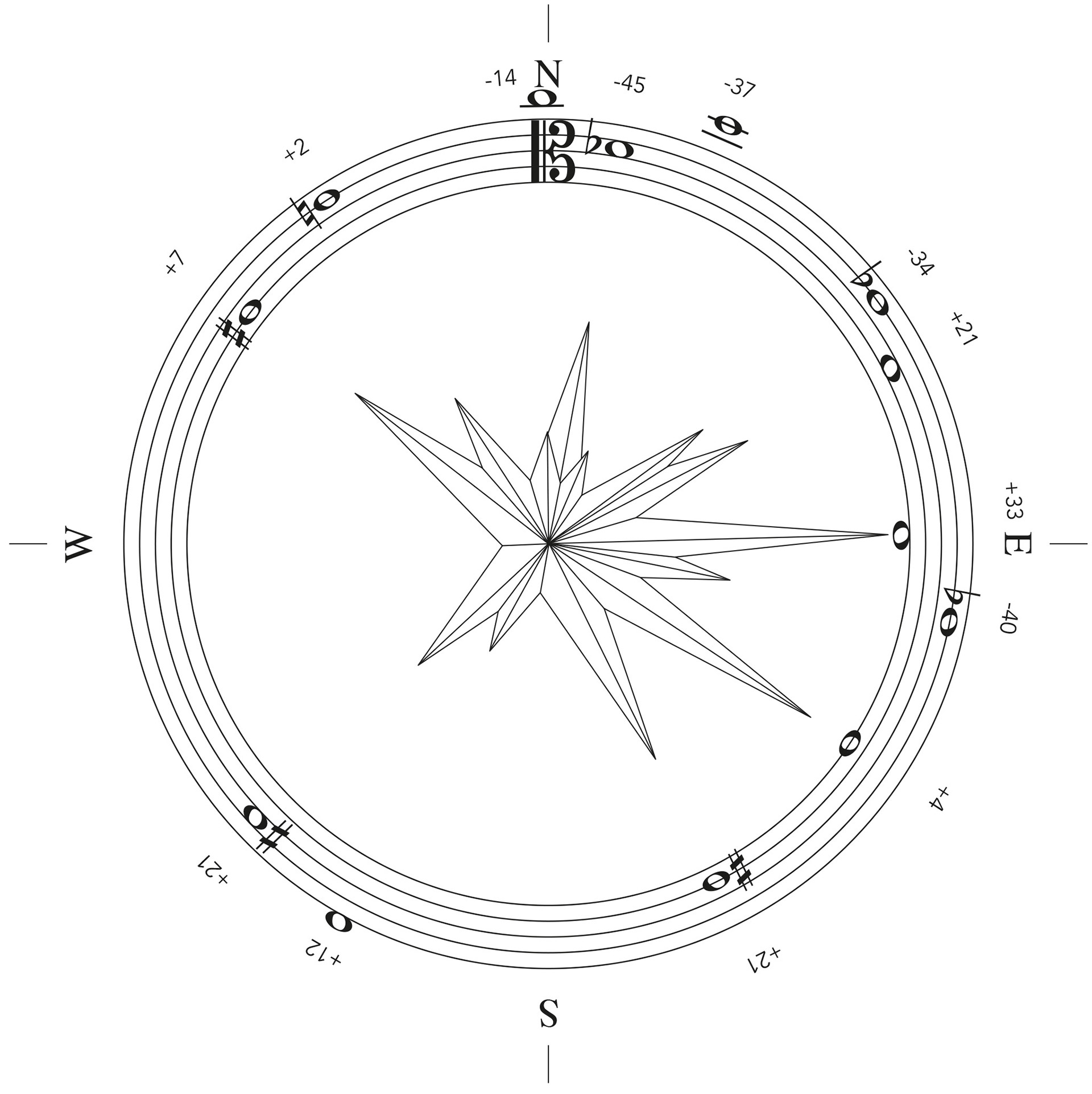Bignia Wehrli
Den Horizont in der Hand halten
February 25 – April 22 2018
The artistic process of Bignia Wehrli (b. 1979, lives and works in Berlin and Sternenberg) often starts with the concept for an experiment, the execution of which requires specific, yet to be built apparatus. The result generated by the experiment can often be described as autonomous imagery; chronologically this imagery is the final product of recording and documenting, but it does not claim any superiority over the process that leads to its existence. In Wehrli's work, conceptual, performative and visual aspects are all equal and relevant parts of what, in the end, is the artwork.
The quasi-semiotic triad consisting of recording device, recording process and recording result, is key to both works that are centre-stage at Kunsthalle Winterthur. TRIKLANG (2012/2018) comprises a self-made string instrument called an Ohrmeterthat translates spatial distance into sound pitches. In collaboration with Dresden-based composer Peter Andreas, Wehrli produced an acoustic mapping of Saxony, based on Christian August Nagel's Triangulation Grid from 1862. At each of the 36 meter points in Nagel's original grid, the distances are mapped and played on the Ohrmeter, and are also recorded on video. As a result, a unique pitch is attributed to each point, producing a tune that is then transformed into a so-called Windrosenpartitur – both a drawing and a sheet of music. Sonnenzirkel – Rhein (2017) is the result of the artist setting up a camera obsucra on a raft and setting it off down the river Rhine for a journey between Sargans and Buchs. A series of ten photographs taken on the journey show a 360 degree panorama; a result of the raft spinning around while floating down the river. Not all of Wehrli's works are as large-scale and involved as TRIKLANG and Sonnenzirkel–Rhein - in others, Wehrli addresses her point of view through the camera lens and creates seemingly simple moments of poetic synchronicity and difference between herself and the natural elements. One such video work completes the presentation at Kunsthalle: In Den Horizont in der Hand halten (2017), the hand of the artist is seen attempting to hold a glass of water in line with the sea's horizon behind it.
Oliver Kielmayer





